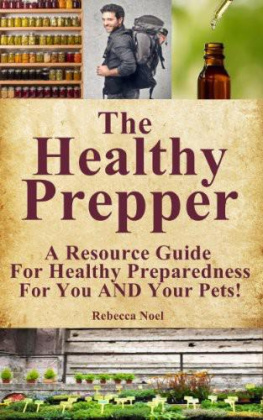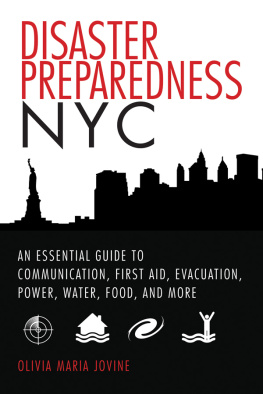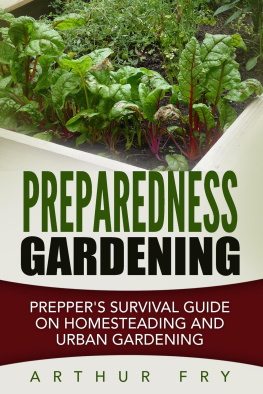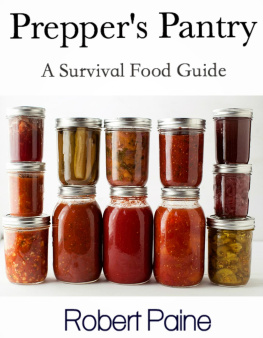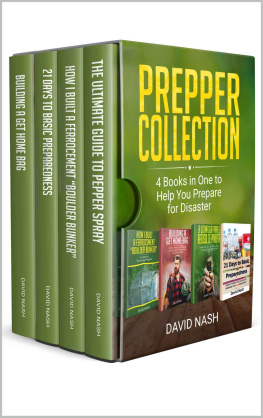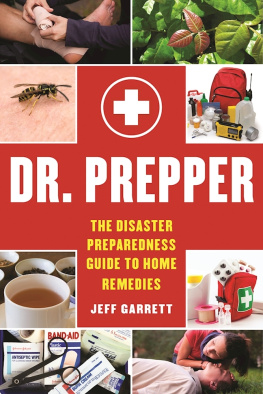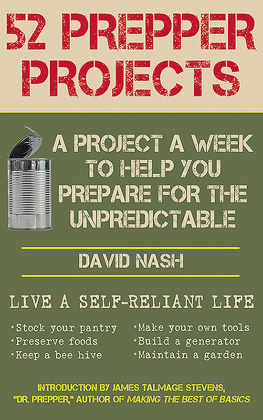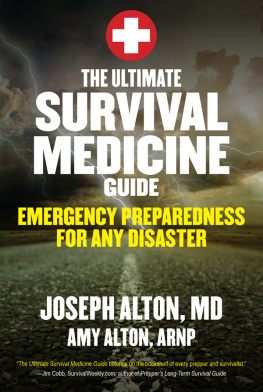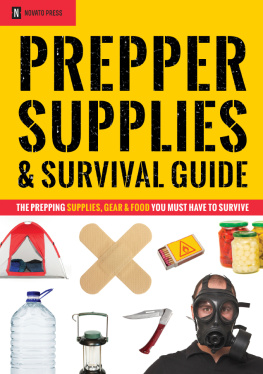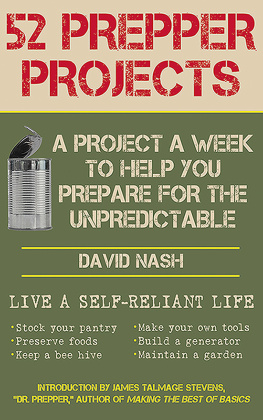The Healthy Prepper
by Rebecca Noel
Table of Contents
1. Introduction
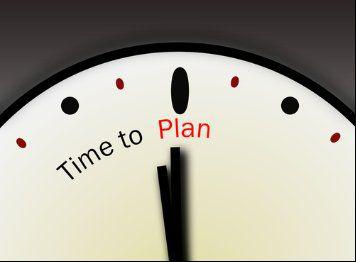
Alternative health is something I've been exposed to since childhood. My parents and also my grandparents were alternative health practitioners and this is something that has been ingrained in me literally since birth and is an integral part of my lifestyle.
When first becoming interested in emergency preparedness as I plowed through prepper website after prepper website and read hundreds of articles and dozens of books on the subject of prepping I was surprised at what I found.
There are hundreds of websites, articles and books on the topic of preparedness yet most all of them offer the same advice, products and resources to their readers. Some of the information is fantastic and informative but also a lot of it is actually quite unhealthy and toxic. I have found very little information out there for health conscious preppers so I decided to write this book and offer some alternative information, options and resources for health conscious preppers.
There are so many facets of preparedness but this book will only focus on the aspects that directly affect your health and the health of your pets. So this book mainly covers food related topics (including survival gardening), water, alternative medicine options and personal care topics.
Preparedness, in my opinion, is NOT just for an end of the world scenario. Preparedness is also for situations where food might not be available for a while due to massive crop failures worldwide, worldwide water shortages (which we are already experiencing), economic collapses or losing your job, etc. There are many other scenarios besides the end of the world and if the world were truly ending there would be no need to prepare to survive.
Emergency situations can end up being long term. There are many possibilities of things that could happen. It's very hard to predict how long term you might have to end up using the foods, water and medications you are storing up on right now.
This book is written primarily for health conscious individuals who want to prep to actually survive longer than just an immediate emergency situation. It would be really sad to spend lots of time, money and effort into being prepared only to die from cancer or poor health due to the foods, water and medications you stocked up on. This book is for people who are REALLY prepping to not just survive but to also thrive.
Also this book is meant to be a resource guide and not just an informative read. So many people only write about a topic and leave you scratching your head trying to figure out where to find what they are talking about. And if the product or resource written about isn't on the first 10 pages or so of Google then good luck finding it. This book is different. I provide links in the book to most everything I write about saving you lots of your precious time trying to locate what I write about. This is a true resource guide.
2. Water Purification & Storage
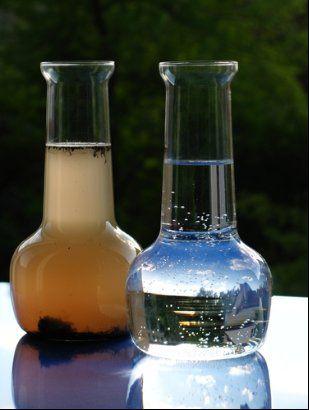
2.1. The Impending Worldwide Water Crisis
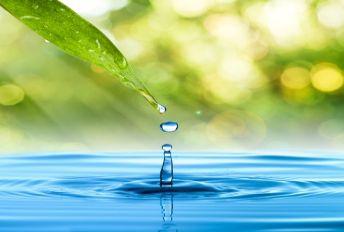
Part of any emergency preparedness system has to address water. Having access to clean, safe drinking water is probably the number one priority of all the emergency preparedness preparations. Humans can live 3 weeks without food but only 3 days without water. Its more important than food, more important than fuel and more important than money. Without water you die.
Storing up a supply of water for an emergency situation should be your first priority, in my opinion, but what if the emergency was really long term....like years or even permanent?
Water is the world's most precious resource, and in every way is more valuable than all the oil, gold and other precious metals combined, but scientists are warning it is becoming scarce and the world is quickly running out of clean drinking water.
That may sound like a typical conservationist/alarmist sound byte but it's not. The earth's surface is about 70% water but we can drink less than 3% that and more than half of that is inaccessible because it is locked in the polar ice caps. The current 7 billion world population is still growing and the water footprint per person used on a daily basis may shock you.
In simple terms a country's water footprint, as opposed to simple water use, is the total amount of water needed for the production of goods and services. Figuring out a country's water footprint means adding all the water used plus the water inherent in products imported, then minus the water in exports.
It's probably not a big shocker that America's water footprint is higher than the rest of the world's water footprint. We use more than twice the world average!
According to National Geographic, the average American lifestyle is fueled by nearly 2,000 gallons of water a day. Only around five percent runs through toilets, taps, and garden hoses at home. Nearly 95 percent of your water footprint is hidden in the food you eat, energy you use, products you buy, and services you rely on.
Sandra Postel, director of the Global Water Policy Project, which is based in Los Lunas, New Mexico, says, according to their most recent study, which she says is the most comprehensive and finest resolution analysis to date, that researchers estimate agriculture accounts for about 92% of the worlds water footprint. Think about that for a moment. If 92% of our water use is used for agriculture and that water disappears or becomes too polluted for use what would this do to the world's food supply? How would that affect your future access to food supplies?
The farmed animal industry uses a huge amount of water. For example, it can take up to 2,000 gallons of water to produce one gallon of milk. The cow needs water to perform basic biological functions from day to day, and only a fraction of the water the cow consumes is actually converted into milk.
It takes more than 2,400 gallons of water to produce 1 pound of meat, while growing 1 pound of wheat only requires 25 gallons. You save more water by not eating a pound of meat than you do by not showering for six months!
Between watering the crops that farmed animals eat, providing drinking water for billions of animals each year, and cleaning away the filth in factory farms, transport trucks, and slaughterhouses, the farmed animal industry places a serious strain on our water supply. Nearly half of all the water used in the United States goes to raising animals for food.
According to the United Nations, raising animals for food (including land used for grazing and land used to grow feed crops) now uses a staggering 30 percent of the Earth's land mass. In many countries, water is pumped up for agricultural use at a higher rate than it can be replenished.
Agricultural water pollution is another major problem. Agricultural run-off with fertilizers that contain nitrogen has already caused no fewer than 200 "dead zones" in various seas, near the mouths of rivers. Fish can no longer survive in such zones.
Ok, so it's clear that the global water consumption is billions of gallons of water being used daily worldwide. Even if 7 billion people had only a 15 gallon water footprint per day as opposed to the 2000 gallons estimated per person in America, that extremely conservative number is still 105 billion gallons of water daily worldwide. So you can only guess what the actual amount of water used daily might truly be. Times 365 days a year it's in the trillions annually.
Next page
